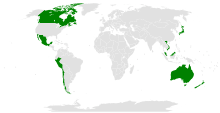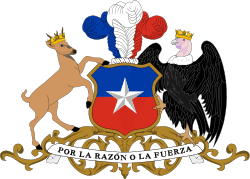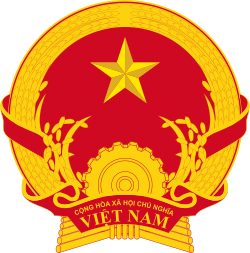Comprehensive and Progressive Agreement for Trans-Pacific Partnership
| Comprehensive and Progressive Agreement for Trans-Pacific Partnership | |
|---|---|
 Signatories | |
| Type | Trade agreement |
| Signed | 8 March 2018 |
| Location | Santiago, Chile |
| Sealed | 23 January 2018 |
| Effective | Not in force |
| Condition | 60 days after ratification by 50% of the signatories, or after six signatories have ratified |
| Signatories | |
| Ratifiers | |
| Depositary | Government of New Zealand[1] |
| Languages | English (prevailing in the case of conflict or divergence), Spanish and French[1] |
The Comprehensive and Progressive Agreement for Trans-Pacific Partnership (CPTPP), also known as TPP11 or TPP-11,[2][3][4] is a signed trade agreement pending ratification by Australia, Brunei, Canada, Chile, Japan, Malaysia, Mexico, New Zealand, Peru, Singapore and Vietnam. The eleven countries represent 13.4 percent of the global gross domestic product or $13.5 trillion, making this one of the largest trade agreements after the North American Free Trade Agreement.[5]
The CPTPP incorporates most of the Trans-Pacific Partnership (TPP) provisions by reference, but suspended 22 provisions the United States favored that other countries opposed, and lowered the threshold for enactment so the participation of the U.S. is not required.[6] The TPP was signed on 4 February 2016, but never entered into force as a result of the withdrawal of the United States.[7]
All original TPP signatories, except the U.S., agreed in May 2017 to revive it[8][9] and reached agreement in January 2018 to conclude the Comprehensive and Progressive Agreement for Trans-Pacific Partnership. The formal signing ceremony was held on 8 March 2018 in Santiago, Chile.[10][11]
The agreement enters into effect 60 days after ratification by at least 50% of the signatories (six of the eleven participating countries),[6] with three countries having ratified as of 18 July 2018.
Provisions
Two-thirds of the provisions in the signed CPTPP are identical to the TPP draft at the time the United States left the negotiating process. The chapter on state-owned enterprises (SOEs) is unchanged, requiring signatories to share information about SOEs with each other, with the intent of engaging with the issue of state intervention in markets. It includes the most detailed standards for intellectual property of any trade agreement, as well as protections against intellectual property theft against corporations operating abroad.[12]
Twenty-two TPP provisions that were priorities of the United States but not other negotiating partners were suspended or modified from the signed CPTPP.[12] One of the most contested provisions advocated for by the US was for increased abilities of companies to sue national governments, in particular over strict regulations over oil and gas developments. Another was the US insistence that copyright extend for the author's lifetime plus 70 years, which is not standard in other countries, and was substantially reduced in the CPTPP language.[5]
Negotiations
During the round of negotiations held concurrently with the Asia-Pacific Economic Cooperation forum in Vietnam in November 2017, Canadian PM Justin Trudeau refused to sign the agreement in principle, stating reservations about the provisions on culture and automotives. Media outlets in Australia, New Zealand, and Japan, which strongly supported quick movement on a deal, strongly criticized what they portrayed as a Canadian sabotage.[13] Canada insisted that cultural and language rights, specifically related to the French-speaking minority, be protected.[14] However, Canada's major reservation was a conflict between the percentage of a vehicle that must originate in a CPTPP member nation to enter tariff-free, which was 45% under the original TPP language and 62.5% under the NAFTA agreement. Japan, which is a major automobile part exporter, strongly supports lower requirements.[13] In January 2018, Canada announced that it would sign the CPTPP after obtaining binding side letters on culture with every other CPTPP member country, as well as bilateral agreements with Japan, Malaysia, and Australia related to non-tariff barriers. Canada's Auto Parts Manufacturers' Association sharply criticized increasing the percentages of automobile parts that may be imported tariff-free, noting that the United States was moving in the opposite direction by demanding stricter importation standards in the ongoing NAFTA renegotiation.[14]
Ratifications
On 28 June 2018, Mexico became the first country to finish its domestic ratification procedure of the CPTPP, with Mexican President Enrique Peña Nieto stating, "With this new generation agreement, Mexico diversifies its economic relations with the world and demonstrates its commitment to openness and free trade."[15] [16]
On 6 July 2018, Japan became the second country to ratify the agreement.[17]
On 19 July 2018, Singapore became the third country to ratify the agreement and deposit its instrument of ratification.[18]。
An overview of the legislative process in selected states is shown below:
| Signatory | Signature[10] | Institution | Conclusion date | AB | Deposited | Ref. | ||
|---|---|---|---|---|---|---|---|---|
| 8 March 2018 | Senate | 24 April 2018 | 73 | 24 | 28 June 2018[15][16] | [19] | ||
| Presidential Assent | 23 May 2018 | Granted | ||||||
| 8 March 2018 | House of Representatives | 18 May 2018 | Majority approval(Standing vote) | 6 July 2018[17] | [20] | |||
| House of Councillors | 13 June 2018 | 168 | 69 | [21] | ||||
| 8 March 2018 | no parliamentary approval required | 19 July 2018[18] | [22] | |||||
Potential future members
In January 2018 the United Kingdom government stated it is exploring becoming a member of the Trans-Pacific Partnership to stimulate exports after Brexit in March 2019 and has held informal discussions with the members.[23] In October 2018, Japanese Prime Minister Shinzo Abe said he would welcome the United Kingdom joining the partnership post-Brexit.[24]
On 25 January 2018, U.S. President Donald Trump in an interview announced his interest in possibly rejoining the TPP if it were a "substantially better deal" for the United States. He withdrew the U.S. from the original agreement in January 2017.[25] On 12 April 2018, President Donald Trump told the White House National Economic Council Director Larry Kudlow and U.S. Trade Representative Robert Lighthizer to look into joining the new deal.[26]
| Country | Status 2016 agreement | Status CPTPP | Announced Interest |
|---|---|---|---|
| Non TPP signatory | Announced Interest[23] | January 2018 | |
| Former TPP signatory | Announced Interest[25][26] | January 2018 | |
| Non TPP signatory | Announced Interest[27] | 2018 | |
| Non TPP signatory | Announced Interest[27] | 2018 | |
| Non TPP signatory | Announced Interest[27] | 2018 | |
| Non TPP signatory | Announced Interest[27] | 2018 | |
| Non TPP signatory | Announced Interest[27] | 2018 |
See also
References
- 1 2 "Comprehensive and Progressive Agreement for Trans-Pacific Partnership" (PDF). Government of New Zealand. Retrieved 10 February 2018.
- ↑ "大筋合意に至ったTPP11 包括的及び先進的な環太平洋パートナーシップ協定" (PDF) (in Japanese). Mizuho Research Institute. 13 November 2017. Retrieved 2018-01-24.
- ↑ Benson, Simon (January 25, 2018). "$13.7 trillion TPP pact to deliver boost in GDP". The Australian. Retrieved 2018-01-24.
- ↑ Blanco, Daniel (January 23, 2018). "Se alcanza acuerdo en texto final del TPP11". El Financiero (in Spanish). Retrieved 2018-01-24.
- 1 2 "TPP 2.0: The Deal Without the US". The Diplomat. 2018-02-03. Retrieved 2018-04-13.
- 1 2 The TPP Is Dead. Long Live The Trans-Pacific Trade Deal
- ↑ Riley, Charles (23 January 2017). "Trump's decision to kill TPP leaves door open for China". CNN. Retrieved 23 January 2017.
- ↑ Shaffer, Sri Jegarajah, Craig Dale, Leslie (2017-05-21). "TPP nations agree to pursue trade deal without US". CNBC. Retrieved 2017-05-21.
- ↑ hermesauto (2017-05-21). "Saving the Trans-Pacific Partnership: What are the TPP's prospects after the US withdrawal?". The Straits Times. Retrieved 2017-05-21.
- 1 2 "11 nations to sign Pacific trade pact as US plans tariffs". nydailynews.com. 8 March 2018. Retrieved 9 March 2018.
- ↑ "Canada Reaches Comprehensive and Progressive Trans-Pacific Partnership Agreement". natlawreview.com. 19 January 2018. Retrieved 9 March 2018.
- 1 2 Goodman, Matthew P. (2018-03-08). "From TPP to CPTPP". Center for Strategic and International Studies. Retrieved 2018-04-13.
- 1 2 "'We weren't ready' to close deal: Trudeau defends Canada's actions on TPP". CBC News. 2017-11-11. Retrieved 2018-04-14.
- 1 2 "Canada reaches deal on revised Trans-Pacific Partnership". CBC News. 2018-01-23. Retrieved 2018-04-14.
- 1 2 "Mexico's senate ratifies sweeping Asia-Pacific trade deal". Reuters. Retrieved 9 May 2018.
- 1 2 The official website of the New Zealand Government ,28 June 2018 CPTPP law in the House as Mexico first to ratify
- 1 2 Notification of Completion of Domestic Procedures for the Comprehensive and Progressive Agreement for the Trans-Pacific Partnership (TPP11 Agreement)
- 1 2 SINGAPORE RATIFIES THE COMPREHENSIVE AND PROGRESSIVE AGREEMENT FOR TRANS-PACIFIC PARTNERSHIP
- ↑ "Mexico's senate ratifies sweeping Asia-Pacific trade deal". Access to Energy. 24 April 2018. Retrieved 3 August 2018.
- ↑ "Japan's lower house passes TPP-11, pushing related trade bills". The Japan Agrinews. 30 May 2018. Retrieved 3 August 2018.
- ↑ "Japanese Parliament Approves New Agreement on Trans-Pacific Partnership". 13 June 2018. Retrieved 3 August 2018.
- ↑ "Trans-Pacific Partnership: parliamentary steps to ratification". Parliament of New Zealand. 31 October 2017. Retrieved 3 August 2018.
This paper sets out the framework for parliamentary involvement in the process leading up to the ratification of an international multilateral trade treaty
- 1 2 Gregory, Julia (2018-01-03). "Britain exploring membership of the TPP to boost trade after Brexit". The Guardian. ISSN 0261-3077. Retrieved 2018-01-03.
- ↑ McCurry, Justin (8 October 2018). "UK welcome to join Pacific trade pact after Brexit, says Japanese PM". the Guardian. Retrieved 8 October 2018.
- 1 2 "Trump: I would reconsider a massive Pacific trade deal if it were 'substantially better'". CNBC. Retrieved January 25, 2018.
- 1 2 Trump to explore entering Pacific trade pact he once called 'a disaster'
- 1 2 3 4 5 "TPP countries to start accession talks for new members in 2019". The Japan Times. 2018-07-19. Retrieved 2018-08-01.
External links
- Agreement text
- TPP text (largely incorporated in this agreement)

